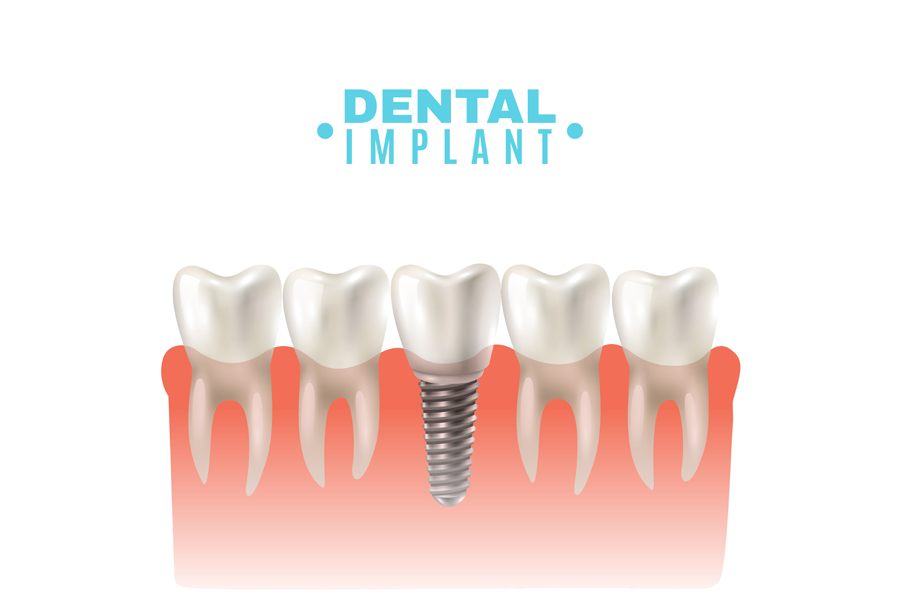Treatments
Implant

Dental implants are artificial tooth roots placed in the jaw bone in areas where tooth loss occurs. They have superstructures according to the type of prosthesis to be applied.
In today's dentistry practices, it is possible to correct the functions such as aesthetics, chewing and speech that patients have lost through implant-supported restorations.
After the teeth are extracted, the bone surrounding the tooth roots starts to melt over time, this is called resorption. As a result of bone resorption, facial profile is distorted, lip and cheek support disappears.
Wrinkles around the mouth increase and the tip of the nose and chin come closer together. In order to prevent bone resorption, implant placement should be considered to replace the roots of extracted teeth in appropriate cases.
Fixed or removable prostheses used to replace missing teeth provide the replacement of only the crown (the visible part of the teeth in the mouth) of the lost teeth. In addition to the crown, the purpose of placing the root in the mouth is to preserve the presence of bone.
The bone forms a tight bond with the implant surfaces and allows them to function like natural teeth. The biting and chewing functions provided by implant-supported fixed prostheses stimulate the bone and prevent bone resorption.
In addition, with the use of dental implants, the teeth adjacent to the lost tooth do not need to be reduced in size and the health of the natural teeth is preserved. The appropriate implant treatment for you should be planned by your physician after a thorough examination.
In today's dentistry practices, it is possible to correct the functions such as aesthetics, chewing and speech that patients have lost through implant-supported restorations.
After the teeth are extracted, the bone surrounding the tooth roots starts to melt over time, this is called resorption. As a result of bone resorption, facial profile is distorted, lip and cheek support disappears.
Wrinkles around the mouth increase and the tip of the nose and chin come closer together. In order to prevent bone resorption, implant placement should be considered to replace the roots of extracted teeth in appropriate cases.
Fixed or removable prostheses used to replace missing teeth provide the replacement of only the crown (the visible part of the teeth in the mouth) of the lost teeth. In addition to the crown, the purpose of placing the root in the mouth is to preserve the presence of bone.
The bone forms a tight bond with the implant surfaces and allows them to function like natural teeth. The biting and chewing functions provided by implant-supported fixed prostheses stimulate the bone and prevent bone resorption.
In addition, with the use of dental implants, the teeth adjacent to the lost tooth do not need to be reduced in size and the health of the natural teeth is preserved. The appropriate implant treatment for you should be planned by your physician after a thorough examination.
